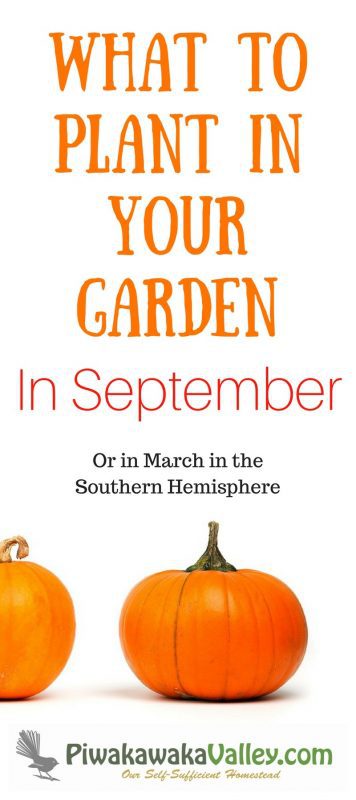This post was most recently updated on September 4th, 2019
What to plant in your Fall vegetable garden in September if you are in the Northern Hemisphere and what to plant in your vegetable garden in March if you are in the Southern Hemisphere.
Please read: This information is provided for educational purposes only and is not intended to treat, diagnose or prevent any disease. We encourage you to make your own health care decisions in partnership with a qualified health care professional.
This post contains affiliate links, this means at no extra cost to you, we make a commission from sales. Please read our Disclosure Statement
What you can grow in your September garden varies significantly depending on where you live. In warmer places – Zones 8-10 you can keep planting outdoors, straight into the soil.
In cooler areas Zones 5-7 you can still sow some things, just start them indoors first.
Most seeds germinate best with a soil temperature of between 45-75F / 8-20C.
Make sure you keep new seedlings out of the baking sun, or the first frosts, and make sure everyone is well mulched and well watered.
To use the lists below, first you need to discover what USDA Zone you live in.
If you are looking for more information about vegetable gardening, I suggest that you also have a good read over our growing a prolific garden information.
We recommend that you get your seeds from Seeds for Generations as they are a homegrown, US family business specializing in heirloom seeds.
Mulch around crops with compost or peas straw, give them a good feed of liquid manure and hoe regularly to keep the weeds at bay. This will give young plants a good, strong start.
Pea and bean crops should be cleared away once their crops are finished. I like to use these to mulch the other vegetables with. Where you removed them from either sow spring cabbages or a green manure crop.
By now, some cooler areas may be waking to a touch of frost. It pays to keep a “first frost” diary marking when you get the first and last frost at your place.
Year to year it may vary somewhat, but you will get to know when to expect them. I mark mine on my google calendar then set it to repeat each year. If you print off the Seed Sowing and Harvesting Guide you could mark yours on there.
As you harvest your cabbage and broccoli, pull their stalks from the ground and throw them to your compost pile unless you are wanting seeds from them. They continue to pull nutrients from the soil, and they provide a safe haven for nasty aphids.
Plant some spring cabbages immediately after some rain to reduce how much you have to water them. If you plant them 1 ft apart, you can harvest every second one at about 1/2-3/4 grown, then leave the rest to mature.
You can still plant out cauliflower, they will stand over winter and grow further when the weather warms up again in spring.
What to plant in your September garden depending on your USDA Zone
Zone 1-3
Artichoke
Radish
Garlic
Spinach
Turnip
Chard
Zone 4-5
Beet
Cauliflower
Spinach
Broccoli
Kohlrabi
Turnip
Cabbage
Lettuce
Carrot
Onions
Zone 6-7
Beet
Cauliflower
Spinach
Broccoli
Kohlrabi
Turnip
Cabbage
Lettuce
Carrot
Onions
Zone 8-9
Collard greens
Onion (bunching)
Onion (bulbing)
Beets
Endive/Escarole
Onion (multipliers)
Broccoli
Kale
Parsley
Brussel sprouts
Kohlrabi
Radish
Cabbage
Leek
Carrots
Lettuce
Turnips
Cauliflower
Mustard
Zone 10
Beans (bush)
Eggplant
Parsley
Beans (lima)
Endive/Escarole
Peas
Beans (pole)
Kale
Peppers
Broccoli
Lettuce
Potato
Cabbage
Mustard
Pumpkin
Cantaloupe
Okra
Squash (summer)
Collard greens
Onion (bunching)
Squash (winter)
Corn (sweet)
Onion (bulbing)
Tomatoes
Cucumbers
Onion (multipliers)
Watermelon
For further reading, I really recommend all of these books. I own every one of them and they are amazing resources!
Please Pin and Share!










